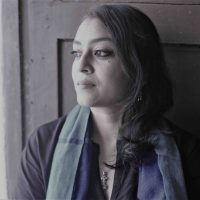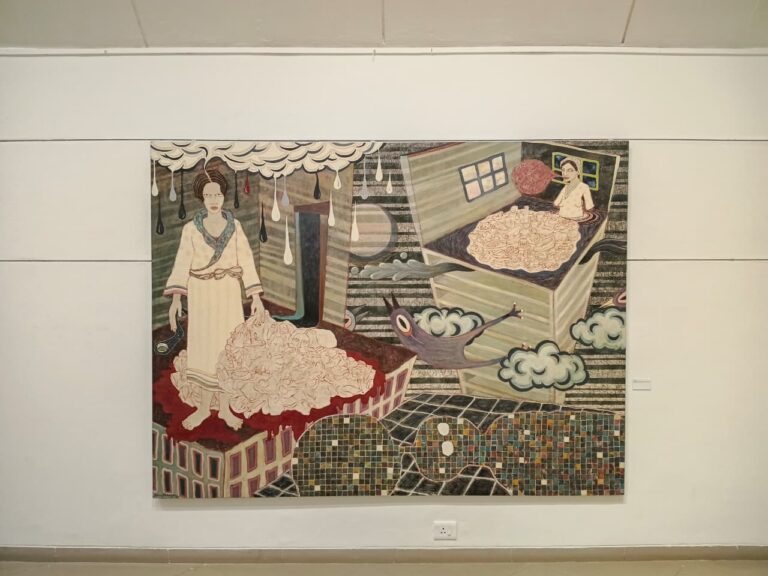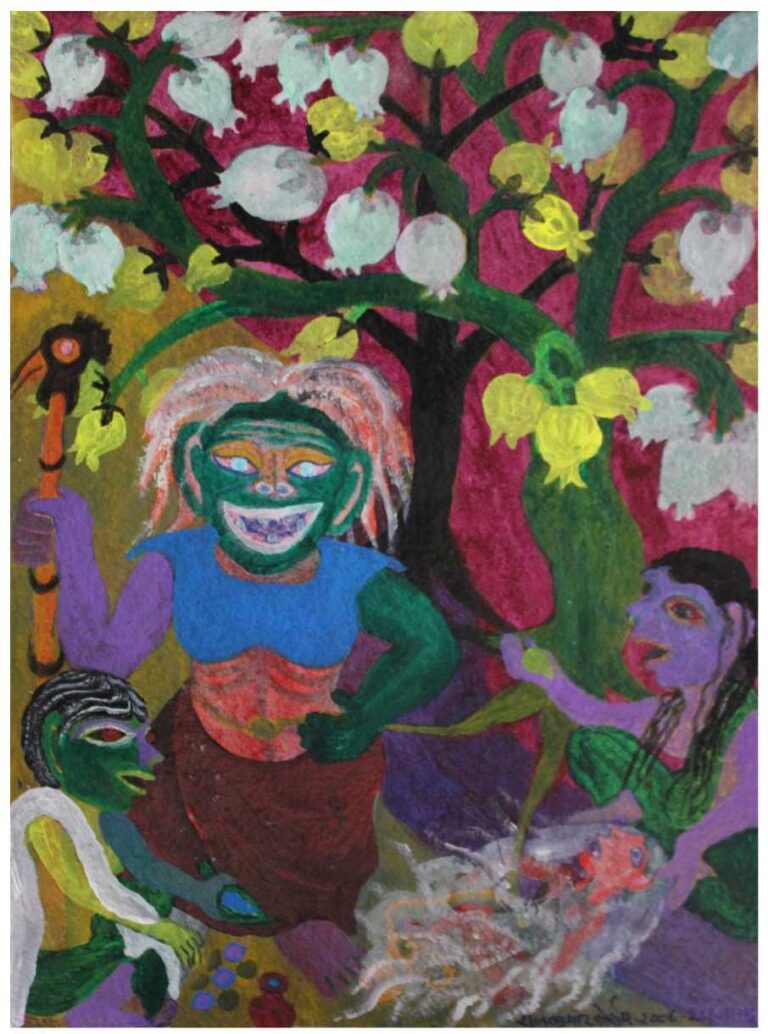Printmaking as a technique, and a medium of image-making possesses several intrinsic qualities that would be hard to replicate by other means. Nothing could bring forth this idea more clearly than encountering the works of master printmaker and artist Devraj Dakoji, whose retrospective exhibition was held in the halls of the National Gallery of Modern Art in Bengaluru, during October-November 2023. Bringing together artworks from over five decades of his illustrious practice, the exhibition showcased more than five hundred prints, paintings and drawings that came from his own, as well as public and private collections in India and USA. Prof Gulam Sheikh, in his introductory talk for the presentation of the Retrospective, remarked on the supreme value of the creation of the mirror-image, that places printmaking apart from other forms of art making.
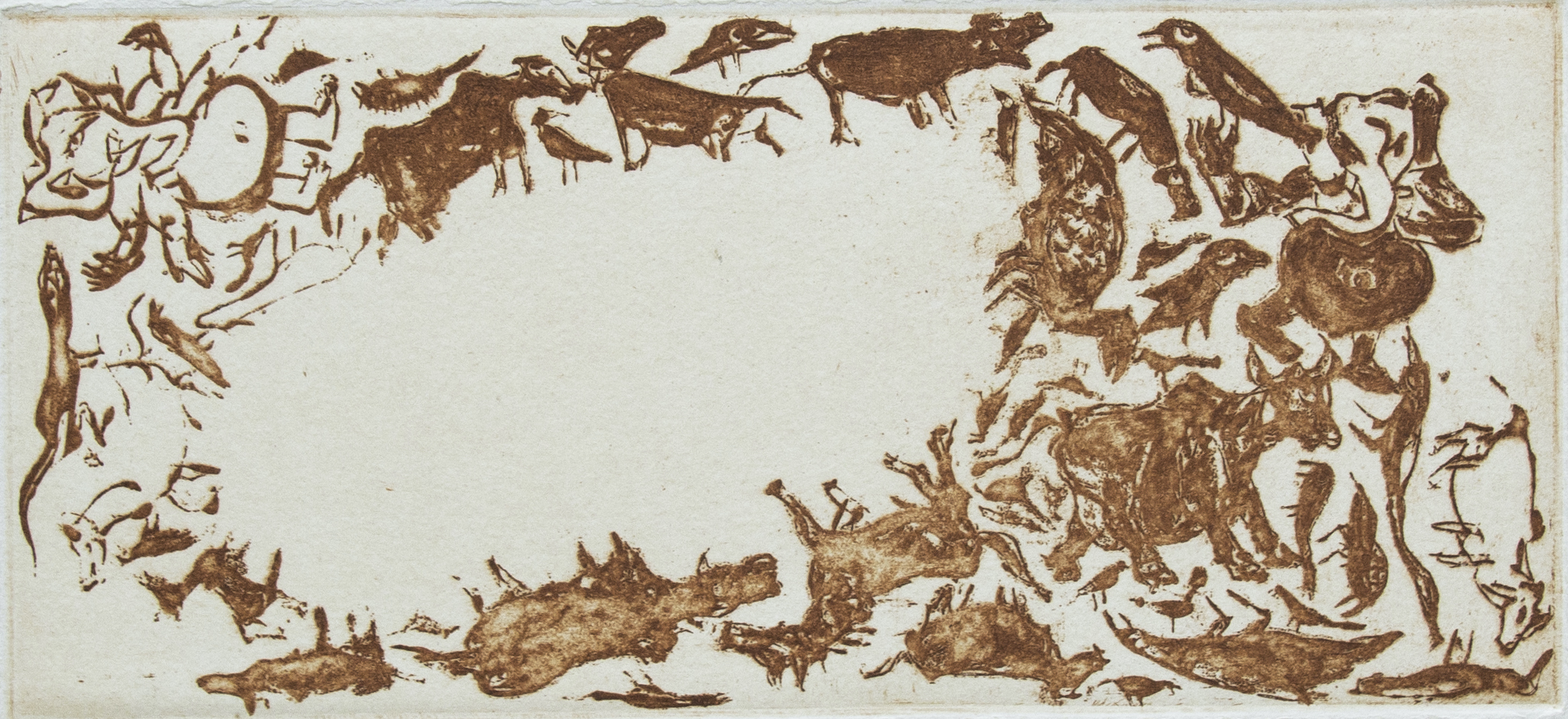
Devraj Dakoji, Pranamu series, 1990, Colour Etching.
Dakoji’s journey of artistic production has been prolific. His training in printmaking under the tutelage of powerful thinkers such as K.G.Subramanyan and Jyoti Bhatt during his stint at M.S. University Baroda in the mid-60s; his post-graduate studies at the Chelsea School of Arts in the mid-70s through a British Council scholarship; and his later presence at the Tamarind Institute, Albuquerque New Mexico U.S.A in the early 90s, all contributed to the immense possibilities he found in the print process. Keen on new experiences, Dakoji found inspiration in travels that took him through England and Europe, as well as across India.
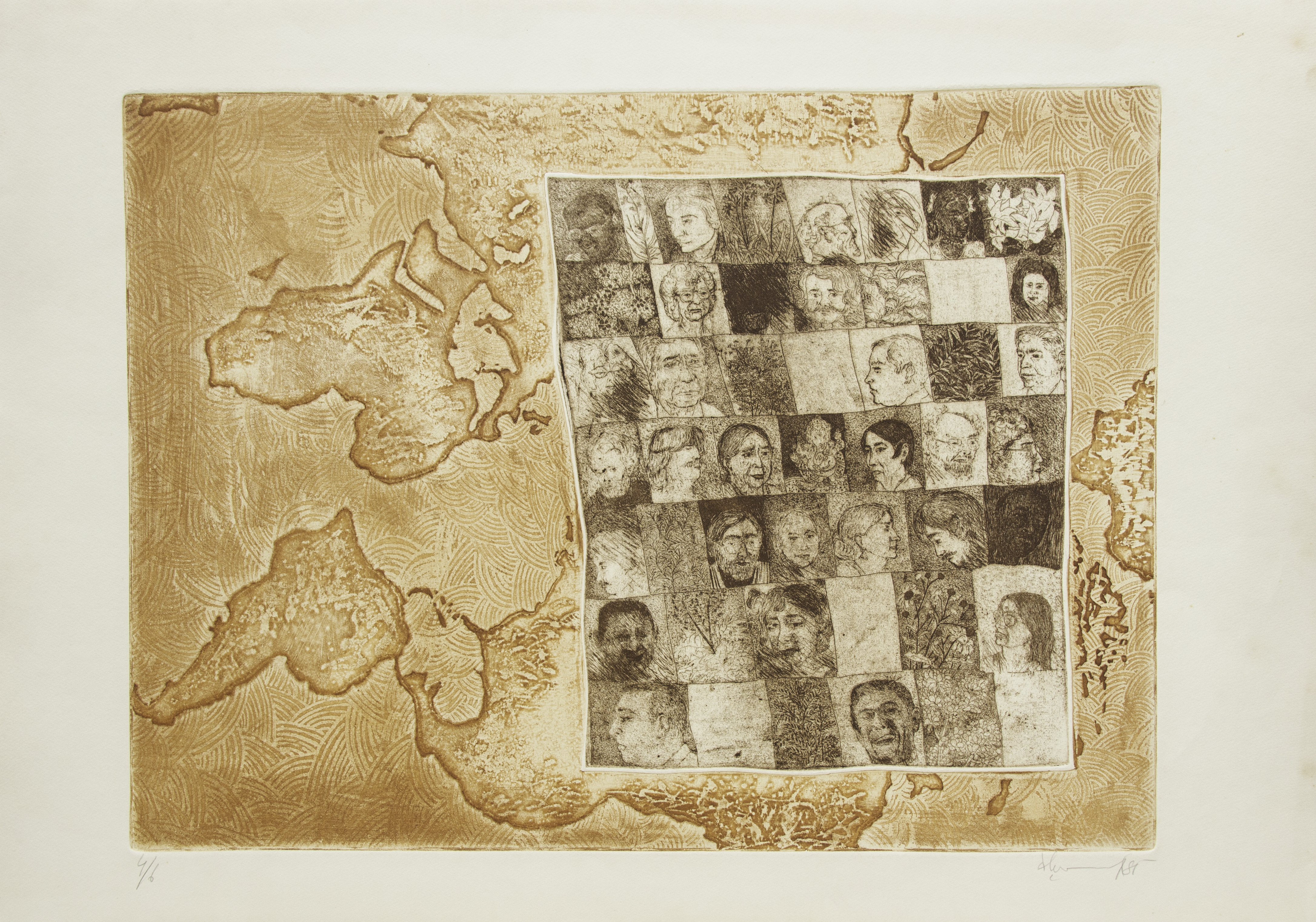
Devraj Dakoji, Portraits of artists at San Diego, 1985, Colour Etching.
The extensive body of work on view in the Retrospective defies simplistic theorisation or categorisation – it proposes the existence of a world in itself. There is a powerful life-force, and an intense study of dynamic shapes, that can be observed in Dakoji’s imagery. The expressiveness of his language (whether representative or abstracted), his mastery over line and form, and the alchemy of generating tonalities and soft layers on the surfaces, all come together to induce visual experiences. One of the prominent groupings in the show is the ‘Stone’ series; early works that explore the fundamental presence of rocks and rock formations within real or surreal topographies. These forms, that recurred later as well, are associated with the boulder-filled landscape of his home environment, Hyderabad. Dakoji’s ability to play with a combination of heaviness and buoyancy, and produce a quintessential departure from conventional formats of composition, is remarkable.
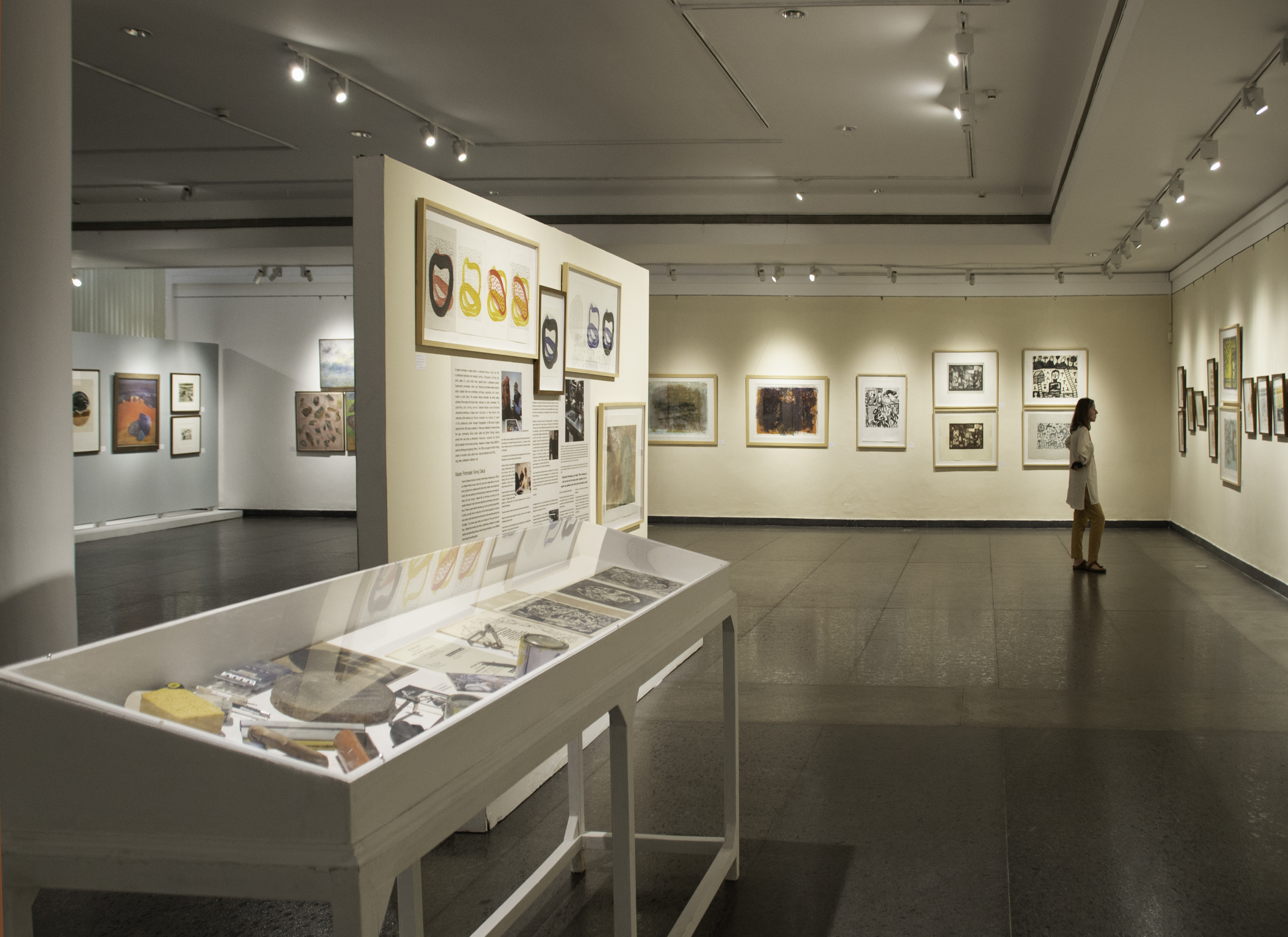
Exhibition View, National Gallery of Modern Art in Bengaluru.
Nature has always been central to his vision, as seen in the large series Pranamu (Telugu language), meaning the moving force of nature, or Prana in Sanskrit. Dakoji’s works in the 80s and 90s were driven by this understanding of the cyclical form of evolution, featuring birds and animals, recognisable and strange creatures, all emerging and vanishing in subtle layers across the picture planes. His paintings and prints revelled in plant and animal life, but deliberately left out human figuration for the most part.

Devraj Dakoji, The Wheel of Life, 2022, Photolithograph with chine, collé.
In 1992, Dakoji learnt ‘collaborative printmaking’ at the Tamarind Institute, University of New Mexico, Albuquerque, USA and in 1993, he met Robert Blackburn, legendary educator, Master Printer, and founder of The Printmaking Workshop now, EFA Robert Blackburn Printmaking Workshop (EFA RBPMW), beginning a three-decade long association. Through the community printshop, Dakoji collaborated with hundreds of painters and sculptors including MF Husain, Zarina Hashmi, Chakaia Booker, Juan Sanchez, and Lenore RS Lim among many others. Artists from across Asia, the Americas and the United States have studied and worked with Dakoji, experimenting with lithography, etching, and serigraphy, as represented by a body of collaborative prints in the exhibition. In 1996, he also set up ‘Atelier 2221’ in Shahpur Jat, Delhi, along with his artist wife, Pratibha. The only independent edition-making studio in India at the time, it drew many artists including V.S. Gaitonde, M.F. Husain, Himmat Shah, Manu Parekh, Madhvi Parekh and Yusuf Arakkal to work there and produce prints. The retrospective showcases several of these collaborative works.
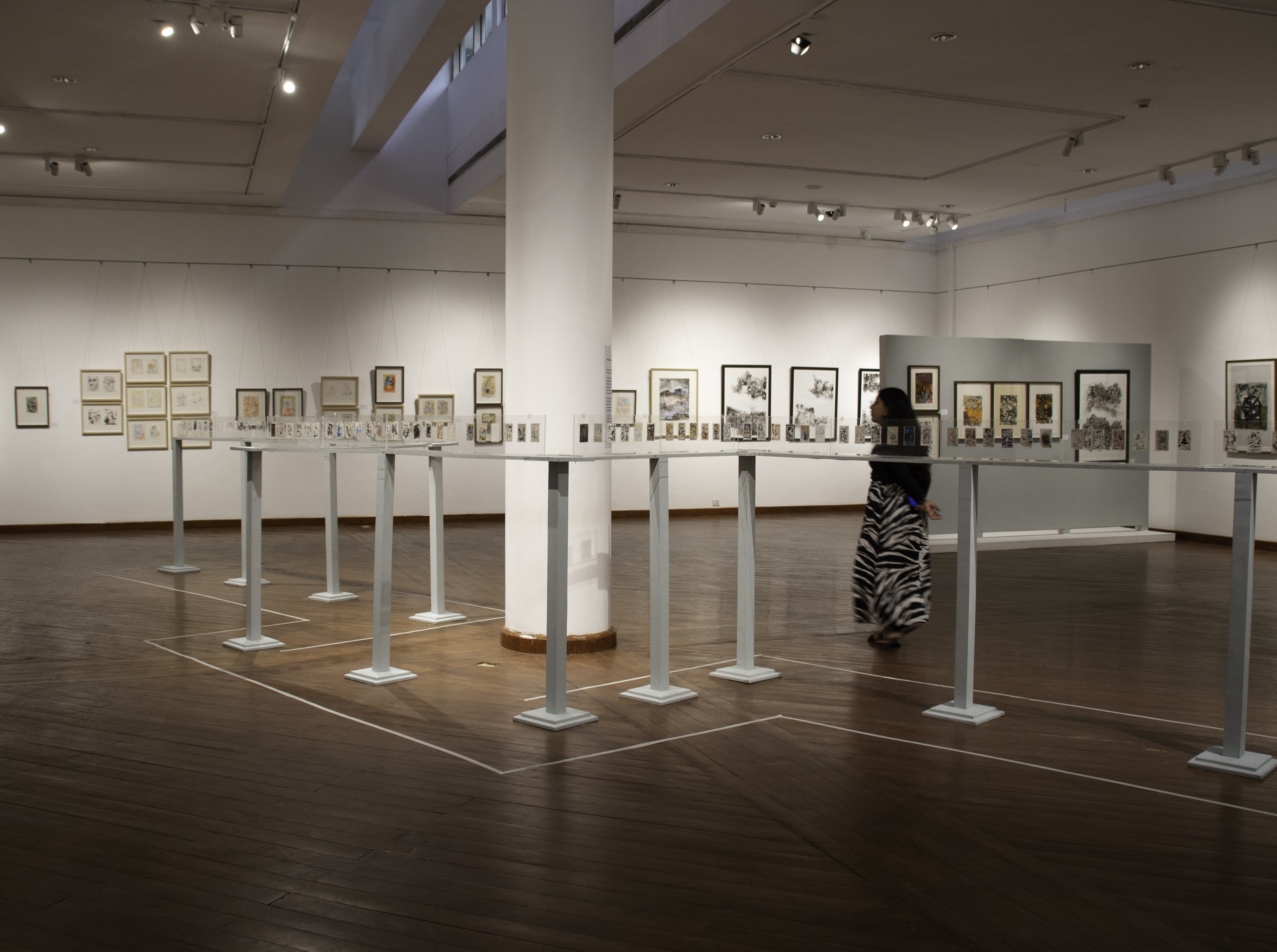
Exhibition View, National Gallery of Modern Art in Bengaluru.
Dakoji’s vast and continually evolving repertoire, as well as his unfettered experimentation were showcased at the exhibition that occupied two whole floors of the NGMA. However, there was a lack of cohesiveness in the contextualisation as well as the display-strategy in the in-house curation. Unnecessarily crowded sections, repetitions and lack of curatorial interpretation did a slight disservice to the masterly journey of the artist. Sometimes a retrospective can pose a practical challenge, in allowing access to a vast amount of material and the desire to include everything. It was the first time that such a comprehensive collection of Dakoji’s art has been showcased publicly. The compilation came together from various sources, including the Salarjung Museum, Hyderabad, Delhi Art Gallery (DAG), New Delhi and The Elizabeth Foundation for the Arts – Robert Blackburn Printmaking Workshop, New York, USA, as well as the private collection of Mukund Lal and family.
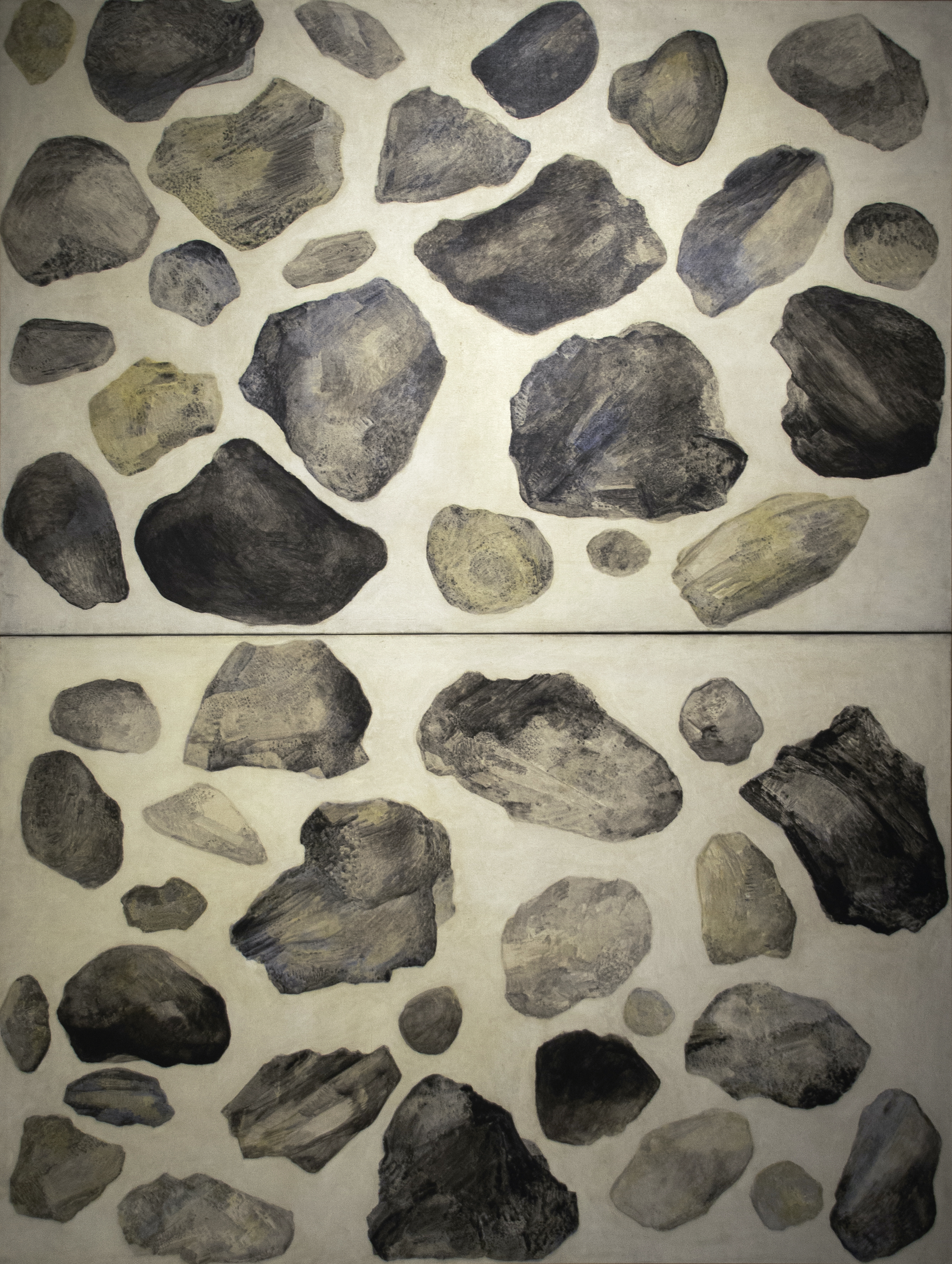
Devraj Dakoji, Rock series, From the collection of NGMA Delhi, 1982, Acrylic on canvas.
While printmaking can adopt rigid conventions at times, Dakoji’s technique and process celebrated fluidity and freedom alongside precision. He continues to demonstrate a child-like fervour for the world and a deep dedication to his art. His language embraces his identity – his past and present; he is an artist in constant evolution, finding newer means of storytelling.
‘Master Printmaker’ – Devraj Dakoji was on view at National Gallery Modern of Modern Art, Bengaluru until September 9, 2023.









